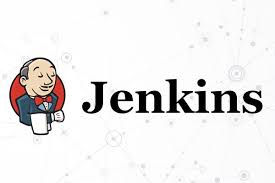Is Flutter A Programming Language? Everything You Need To Know!
- Steve Smith

- Sep 12, 2024
- 4 min read

In the ever evolving landscape of software development, Flutter Online Course has emerged as a significant player, capturing the attention of developers & tech enthusiasts alike. However, there seems to be some confusion about what exactly Flutter is & its role in the programming ecosystem. Specifically, many wonder: Is Flutter a programming language? Let's dive into this topic & clarify what Flutter is, how it works, & why it has become so popular.
Understanding Flutter
Flutter is an open source UI software development toolkit created by Google. Its primary purpose is to enable developers to build natively compiled applications for mobile, web, & desktop from a single codebase. But before we get into the nitty gritty, let's address the core question: Is Flutter a programming language?
No, Flutter Is Not a Programming Language
Flutter itself is not a programming language. Instead, it is a framework that uses a programming language called Dart. Dart, also developed by Google, is the language used to write applications that run on the Flutter framework. So while Flutter is the toolkit & ecosystem that facilitates app development, Dart is the language in which you code those apps.
The Role of Dart in Flutter
Dart is an object oriented, class based language with a syntax similar to other C style languages like Java & JavaScript. It is designed for ease of use & performance, particularly in client side development. When you build an app with Flutter, you write your code in Dart, & Flutter’s toolkit then takes care of compiling that code into native machine code.
Why Dart?
One might wonder why Google chose Dart for Flutter. The choice of Dart comes with several advantages
Hot Reload: Dart’s design allows Flutter to provide a feature called "hot reload," which significantly speeds up the development process. Developers can see the results of changes in real time without restarting the application.
Optimized Performance: Dart compiles to native code, which helps in achieving high performance & smooth animations. This is crucial for creating responsive & fluid user interfaces.
Asynchronous Programming: Dart has built in support for asynchronous programming with features like async & await, making it easier to handle tasks like network requests & data processing.
How Flutter Works
Flutter operates by using a reactive framework, meaning the user interface is built using a series of widgets that describe how the app should look & behave. These widgets are the building blocks of your application. Flutter then uses the Skia graphics engine to render these widgets onto the screen, ensuring a high level of performance & visual fidelity.
Key Features of Flutter
1. Widgets & Customization
Flutter provides a rich set of pre designed widgets that adhere to Material Design & Cupertino (iOS) standards. Additionally, developers can create custom widgets to match specific design needs.
2. Single Codebase
One of the most celebrated features of Flutter is its ability to use a single codebase to build applications for multiple platforms, including iOS, Android, web, & desktop. This approach can save time & resources, as you don’t have to write separate code for each platform.
3. High Performance
By compiling to native code & avoiding the use of a bridge between the app & the underlying platform, Flutter ensures high performance, which is essential for delivering a smooth user experience.
4. Strong Community & Ecosystem
Since its release, Flutter has garnered a strong community of developers & contributors. The ecosystem includes a wealth of packages & plugins that extend Flutter’s capabilities, making it easier to integrate various functionalities into your apps.
Flutter vs. Other Frameworks
To better understand Flutter's position in the market, it's helpful to compare it with other frameworks. For instance, React Native, developed by Facebook, is another popular framework for cross platform app development. While both Flutter & React Native aim to simplify the process of building applications for multiple platforms, there are some key differences
Language: React Native uses JavaScript, whereas Flutter uses Dart. The choice of language can influence developer productivity & performance.
Performance: Flutter’s approach to rendering with the Skia engine generally leads to better performance & consistency in UI compared to React Native’s reliance on native components.
UI Customization: Flutter provides a more consistent & customizable UI experience due to its widget based architecture. React Native relies more on native components, which can lead to inconsistencies between platforms.
Closing Thoughts
In summary, Flutter is not a programming language but a powerful UI toolkit that leverages Dart, a programming language developed by Google. Flutter’s ability to create high performance, visually appealing applications across multiple platforms from a single codebase makes it an attractive choice for modern app development. Its features like hot reload, extensive widget library, & strong community support contribute to its growing popularity.
Understanding Flutter’s role & capabilities can help developers make informed decisions about their tech stack & leverage the full potential of this innovative framework. Whether you’re a seasoned developer or just starting out, Flutter’s combination of flexibility, performance, & ease of use offers compelling advantages for building the next generation of apps.








Comments